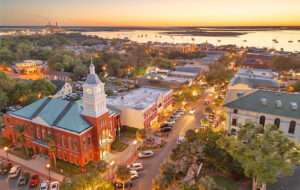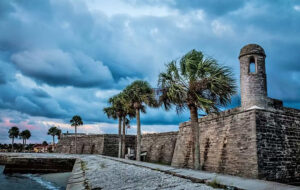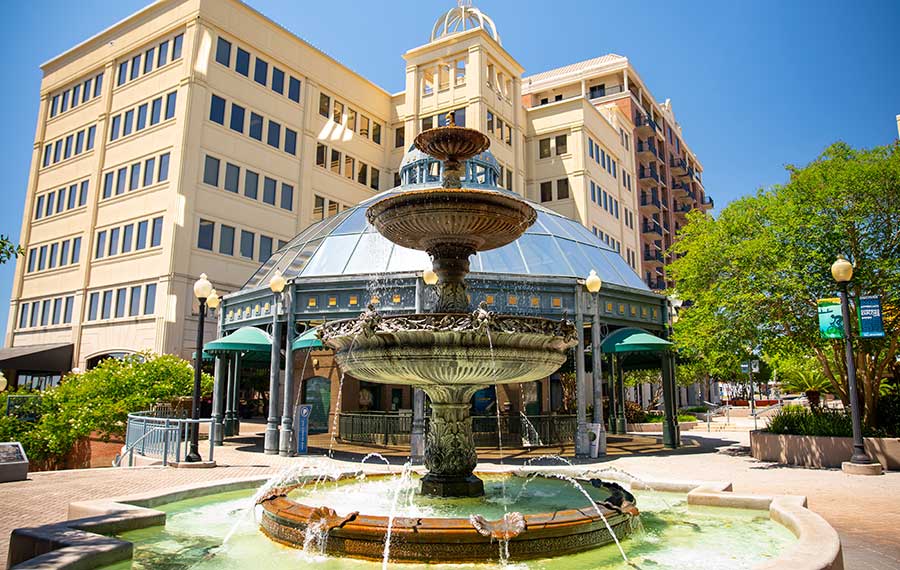
Tallahassee, the vibrant capital of Florida, is a city brimming with rich history, cultural treasures, and unique attractions. From its roots as an important Native American settlement to its role as a modern political and educational hub, this city offers a captivating mix of the past and present. Nestled amid rolling red hills and surrounded by natural beauty, Tallahassee boasts everything from world-class museums and historic landmarks to scenic trails and quirky local gems. Whether you’re intrigued by its ties to Civil Rights history, its reputation for academic excellence, or its unexpected claim to hosting the strongest magnet on Earth, these 25 fun facts will reveal just how dynamic and fascinating Tallahassee truly is.
1) The name Tallahassee comes from a Muskogean Indian word meaning “Old Fields.”
The capital’s name originates from the Muskogean language of the Apalachee people, an indigenous group who once inhabited this north central region of the state. “Tallahassee” is believed to mean “old fields” or “old town,” referencing the abandoned villages and agricultural lands left by earlier Native American groups. This region played a significant role in the pre-Colonial and early Colonial periods, serving as an important site for the Apalachee community and trade in the southeastern United States. The name was retained as European settlers moved into the area in the 19th century, reflecting both the deep history and cultural influence of the native Apalachee people.
2) The Tallahassee-St. Marks Historic Railroad State Trail is the oldest paved rail trail in Florida.
The Tallahassee-St. Marks Historic Railroad State Trail is a captivating blend of history, recreation, and natural beauty. Built along Florida’s oldest rail line, which once connected Tallahassee to the port town of St. Marks in the early 19th century, the trail preserves a piece of Florida’s rich past. Today, it stretches over 16 miles, lined with towering trees and offering an idyllic setting for biking, hiking, and skating. It’s also a paradise for wildlife enthusiasts, with opportunities to spot deer, turtles, and countless bird species. Along the way, visitors can explore landmarks like the picturesque Wakulla River and the historic St. Marks area, which offers glimpses of coastal charm. Popular among locals and tourists alike, the trail provides a peaceful retreat and a dynamic space for outdoor adventure.
3) The strongest magnet on Earth is at FSU’s National High Magnetic Field Laboratory in Tallahassee.
The National High Magnetic Field Laboratory (MagLab) at Florida State University in Tallahassee is home to the world’s strongest magnet, capable of generating an astonishing magnetic field of 45 teslas. This cutting-edge magnet, a marvel of engineering, plays a pivotal role in scientific research, enabling studies at the atomic and molecular levels. Its unparalleled strength allows scientists to explore new frontiers in physics, materials science, and biology, uncovering insights that drive innovations in energy, medicine, and technology. Unique in its design and power, the magnet serves as a hub for researchers worldwide, offering them a chance to perform experiments that would be impossible anywhere else.
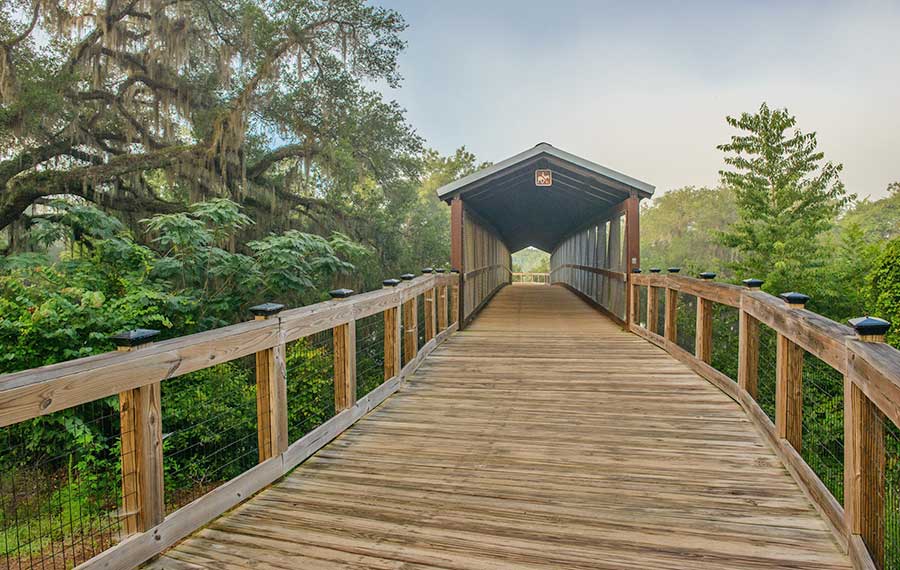
4) Tallahassee has served as an important city for over a thousand years.
Tallahassee has a rich history of significance, rooted in its early role as Anhaica, the principal village of the Apalachee Native people before European contact. This area was a thriving hub for the Apalachee, known for its fertile lands and strategic location. Following its indigenous prominence, Tallahassee’s importance was cemented in 1824 when it was chosen as the Capital of the Florida Territory, a central point between St. Augustine and Pensacola, the territory’s two largest cities at the time. This decision facilitated the region’s political and economic development. Today, Tallahassee remains the State Capital of Florida, symbolizing its enduring role as a focal point for governance and culture. Its transformation from an indigenous center to a modern political hub reflects the evolving history and continuous significance of this dynamic city.
5) Tallahassee is nicknamed “Red Hills,” due to its iron-rich soil and hilly topography.
Compared to the predominantly flat terrain of most of Florida, Tallahassee is noticeably hilly. Situated in a small geographic zone known as the Red Hills Region, this area stands out for its relatively elevated terrain, reaching up to 280 feet above sea level. The soil’s reddish hue comes from its high iron content, a characteristic that not only gives the region its name but also contributes to the area’s agricultural richness. These distinctive features make Tallahassee’s landscape a striking contrast to the sandy, low-lying geography typically associated with Florida.
6) Tom Brown Park is home to a highly-ranked disc golf course.
For several years, the UDisc blog Release Point has ranked top disc golf courses by state, with Tallahassee’s Tom Brown Park earning the top spot in Florida. Disc golf, one of the country’s fastest-growing sports, is played using large discs similar to Frisbees, with each disc designed for specific purposes like driving or putting. The sport shares some familiar terminology with golf – such as tees, birdies, and eagles, but it distinguishes itself with its aerial gameplay.
7) Frenchtown is widely considered the oldest primarily African-American community in the state.
Frenchtown is rich in cultural heritage and historical significance. Established in the 19th century, it became a thriving center for Black professionals, artists, and entrepreneurs during segregation. The area was home to landmarks like the Red Bird Café, a hub for music and community gatherings, and Bethel Missionary Baptist Church, which played a key role in civil rights activism. Frenchtown was also a focal point during the civil rights movement, hosting figures like Dr. Martin Luther King Jr. and supporting grassroots efforts to fight racial inequality. Though the neighborhood has faced challenges over the years, its history as a cradle of resilience, empowerment, and cultural expression continues to have a lasting impact.
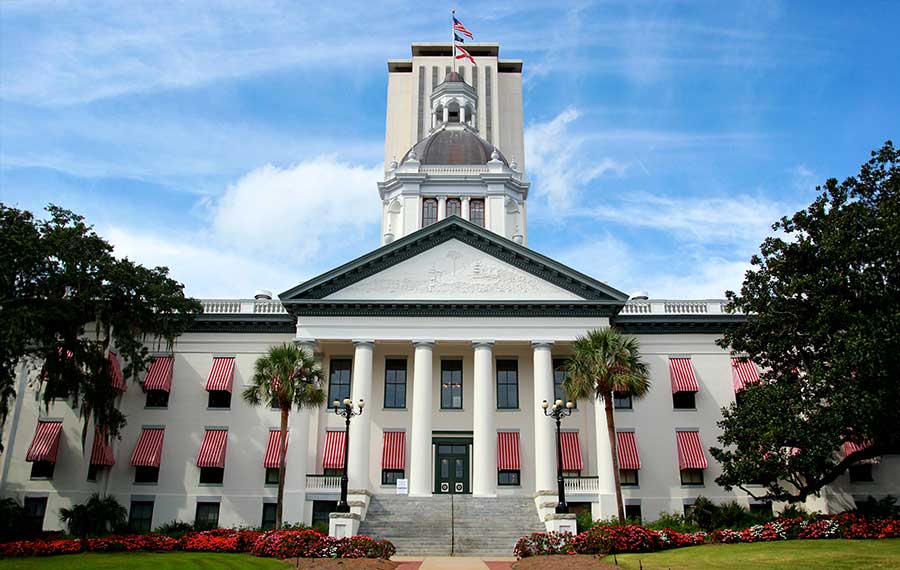
8) Tallahassee is home to the Lewis Spring House, the only private residence in Florida designed by Frank Lloyd Wright.
The Lewis Spring House in Tallahassee is a remarkable architectural treasure by the legendary Frank Lloyd Wright. Built on a serene 10-acre woodland, the house stands out with its unique pod-shaped structure, an innovative design conceived during the same period as Wright’s iconic Guggenheim Museum. Both buildings feature a revolutionary confluence of arcs, underscoring Wright’s visionary approach to design. Nestled in Florida’s capital city, the house merges seamlessly with its natural surroundings, reflecting Wright’s philosophy of organic architecture. Its historical and architectural significance make the Lewis Spring House an irreplaceable piece of Florida’s cultural heritage.
9) Tallahassee hosts three nationally renowned higher education institutions.
Tallahassee is home to three remarkable higher education institutions that contribute significantly to the city’s vibrancy and growth. Florida Agricultural & Mechanical University (FAMU), a historically Black university, is celebrated for its commitment to academic excellence and diversity, producing leaders in various fields while enriching the city’s cultural fabric. Florida State University (FSU) is a prestigious research institution known for its stellar programs in the arts, sciences, and athletics, as well as its global impact, highlighted by unique facilities like the National MagLab. Tallahassee Community College (TCC) serves as a vital foundation for higher education, providing affordable and accessible pathways for students to transfer to universities or enter the workforce. Together, these institutions foster a robust educational ecosystem, drive cultural initiatives, and engage in community development, making Tallahassee a thriving hub for learning and innovation.
10) Tallahassee’s Museum of Florida History hosts a giant mastodon skeleton over 12,000 years old.
Tallahassee museum-goers can marvel at Herman, a striking 12,000-year-old mastodon skeleton that offers a rare glimpse into Florida’s prehistoric past. This impressive specimen, painstakingly preserved and displayed, serves as a reminder of the megafauna that once roamed the state during the Ice Age. Discovered in the muck of Wakulla Springs, Herman showcases the rich fossil history of Florida, where ancient creatures thrived in a unique ecosystem. Towering over visitors, the skeleton is not only a centerpiece of the museum but also a source of inspiration for ongoing research into the lives of these ancient giants. For history lovers and curious minds alike, Herman provides a tangible connection to a vanished world.
11) Wally Amos, the founder of Famous Amos Cookies, was born and raised in Tallahassee.
Wally Amos, born in 1936 in Tallahassee, spent his formative years in the city where he first developed a love for cooking. Raised by his parents, Wallace and Ruby Amos, he lived in Tallahassee until the age of 12. When his parents divorced, he relocated to New York City to live with his aunt, Della Bryant. Her influence proved pivotal, as she would bake cookies for him, sparking his interest in the craft. This childhood experience, combined with his enrollment at the Food Trades Vocational High School, laid the foundation for his future success. Amos later perfected a chocolate chip cookie recipe inspired by his aunt’s baking, eventually becoming the face of the iconic “Famous Amos” cookie brand.
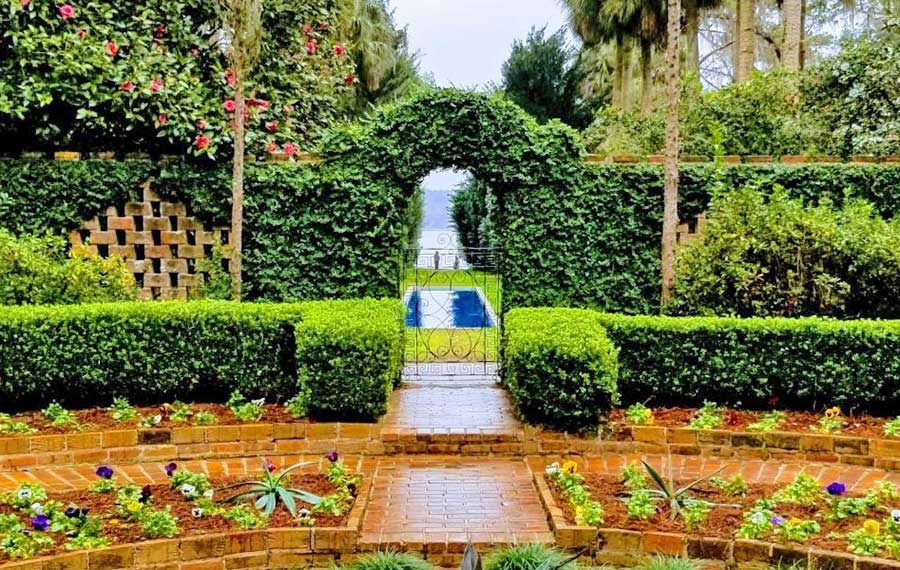
12) In 1995, Alchemy Climbing in Tallahassee became the first dedicated climbing gym in Florida.
Alchemy Climbing, formerly known as Tallahassee Rock Gym, holds the distinction of being Florida’s first dedicated climbing gym, originally opening its doors in 1995. This makes it not only a trailblazer for the sport in the state but also one of the earliest indoor climbing facilities in the entire United States. By providing climbers with a space to train and connect long before the sport gained widespread popularity, Alchemy Climbing played a pivotal role in fostering a passionate climbing community in the region. Its legacy as a pioneer in indoor climbing ensures it remains a cherished part of Florida’s climbing history.
13) The iconic camellias at Maclay Gardens were supplied by what is now Dorothy B Oven Park.
Alfred B. Maclay and Breckenridge Gamble played a key role in shaping the presence of camellias in their gardens in Tallahassee nearly a century ago. Sharing a love for these beautiful plants, the two friends lived just two miles apart on Thomasville Road. Gamble, who owned the Camellia Nursery, sold several specimens to Maclay, including the famed ‘Aunt Jetty’ camellia. This particular plant, imported from the north, was named after Gamble’s aunt. Maclay purchased ‘Aunt Jetty’ for $75, a significant investment for a single plant that highlighted its value to his garden. Today, the legacy of this friendship and dedication to camellias lives on, as the Camellia Nursery site has become Dorothy B Oven Park, a public space cherished by the community.
14) Cascades Park features four historic markers that highlight Tallahassee’s history.
Cascades Park in Tallahassee is a treasure trove of history, with several significant markers that preserve and share the stories of the area’s past. The Prime Meridian Marker highlights Tallahassee’s role as a key geographic and surveying point in Florida’s early development. The Smokey Hollow Commemoration honors the vibrant African-American community that once thrived in the area, celebrating its resilience and cultural contributions. The Korean War Memorial stands as a solemn tribute to the brave men and women who served during the Korean War, ensuring their sacrifices are remembered. Lastly, the Community Remembrance Marker reflects on local and national struggles for justice, acknowledging difficult histories to inspire reflection and growth. Together, these markers connect visitors to Tallahassee’s layered history, blending remembrance with education in a park that unites past and present.
15) Doak S. Campbell Stadium, home to the Florida State Seminoles, has a seating capacity of 82,300.
Doak S. Campbell Stadium at Florida State University stands as a testament to the school’s rich football tradition and its growth over time. Originally built in 1950 with a capacity of just 15,000, the stadium was constructed at a cost of $250,000. Over the years, it has undergone numerous expansions to accommodate the growing fanbase and the surging popularity of FSU football, particularly during the tenure of legendary coach Bobby Bowden. By 1961, the capacity had increased to 25,000, and soon after, the stadium grew further to hold 40,500 fans. This capacity remained for 14 years before significant expansions pushed it to its current 82,300 seats. The success of FSU’s football programs, paired with the university’s expanding student body, has solidified the stadium as the second largest in the Atlantic Coast Conference (ACC), symbolizing the passion and pride of Seminole Nation.
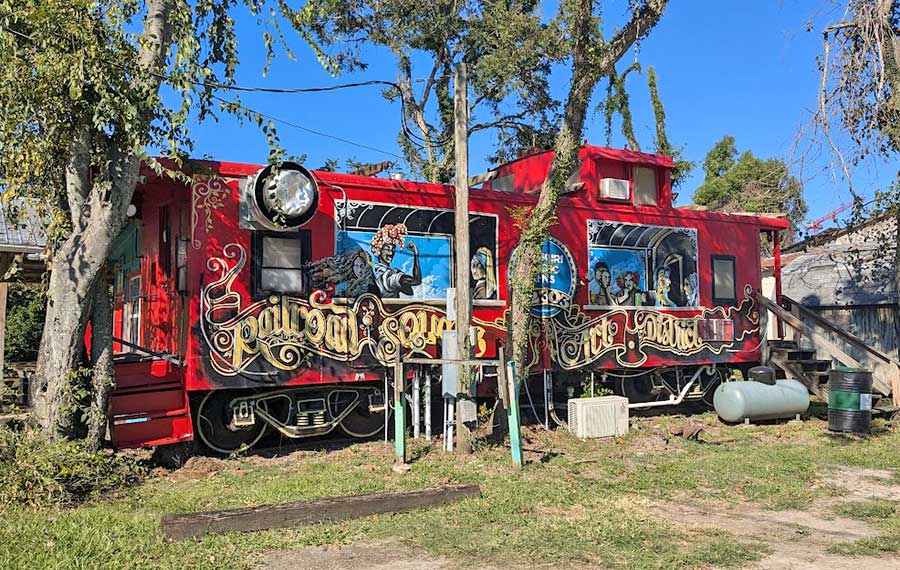
16) Mission San Luis de Apalachee is a Spanish Franciscan mission two miles west of downtown Tallahassee.
From 1656 to 1704, Mission San Luis stood atop one of the highest hills in what is now Tallahassee, serving as a vital center of political, cultural, and social life in Spanish Florida. It was the principal seat of the Chief of the Apalachee Indians and the base for the Lieutenant Governor, symbolizing a unique cohabitation between approximately 1,500 Apalachee and 150 Spanish settlers. This union fostered a rich cultural exchange, blending European and Native American traditions, beliefs, and technologies. Over the centuries, the site evolved from a plantation to a vineyard, then the grounds of a grand mansion, before becoming a public history museum. Today, Mission San Luis stands as a testament to this complex chapter of Florida’s past, preserving and sharing the story of its diverse and intertwined communities.
17) Railroad Square is ten acres of repurposed warehouse space hosting over 70 shops, galleries and venues.
Railroad Square Art District in Tallahassee is a vibrant hub of creativity and local culture, brimming with an eclectic mix of attractions and businesses that cater to all interests. From vintage, thrift, and antique stores to art galleries and quirky creative shops, the district exudes charm and individuality. Visitors can enjoy unique experiences like exploring a non-profit theater, battling on classic machines at an authentic pinball arcade, browsing a gaming shop, or catching a film at a cult cinema. Adventure seekers can test their skills at the largest indoor rock climbing gym in the region or stop by a specialty kayak shop for their next water escapade. The district also delights food lovers with delicious options, including the cozy Square Mug Cafe, the interactive Gamescape Cafe, the laid-back Railroad Square Crafthouse, and the one-of-a-kind Crumbox Gastgarden – proudly housed in a real railroad caboose. Whether you’re shopping, dining, or simply soaking in the creative energy, Railroad Square offers something unforgettable for everyone.
18) The St. Marks Lighthouse is the second-oldest light station in Florida.
Set along the Gulf Coast just a short drive south of Tallahassee, the St. Marks Lighthouse stands as a historic and picturesque gem. Built in 1831, it is one of Florida’s oldest lighthouses, guiding sailors through the often-treacherous waters of Apalachee Bay for nearly two centuries. This iconic landmark is located within the St. Marks National Wildlife Refuge, offering visitors breathtaking views of unspoiled marshes, abundant wildlife, and dazzling sunsets. The lighthouse itself, with its striking white tower and black lantern, evokes a sense of timelessness, providing countless photo opportunities. Beyond its beauty, it has a rich past, surviving hurricanes, wars, and changing tides, symbolizing resilience for the local community. Today, it serves not only as a historical site but also as a hub for events like birdwatching festivals and nature tours, making it a must-visit destination for history buffs and nature lovers alike.
19) In 1999, the Tallahassee Automobile Museum was honored as AACA’s #1 Auto Museum in the U.S.
The Tallahassee Automobile Museum stands as a beacon of automotive history, celebrated for its remarkable collection and dedication to preservation. The museum showcases an extraordinary array of vintage and classic automobiles, each meticulously maintained to reflect its historical and cultural significance. Beyond these stunning cars, the museum offers visitors an immersive experience into the evolution of automotive design and technology. Its dedication to preserving these treasures ensures that current and future generations can appreciate the artistry and innovation of the automobile industry. For collectors, history buffs, and anyone with a passion for cars, the Tallahassee Automobile Museum is an unforgettable celebration of automotive heritage.
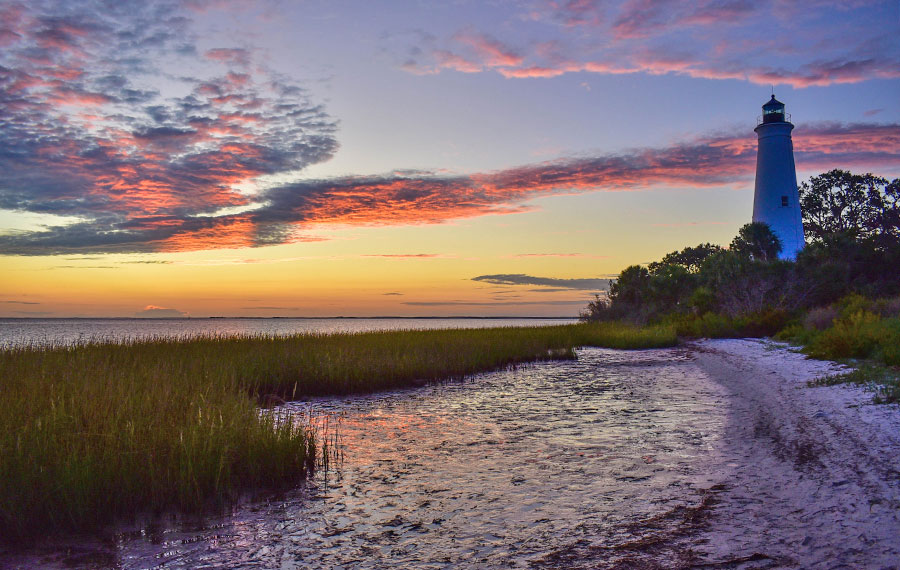
20) The world’s longest known marble bar graces the Soda Fountain in the Lodge at Wakulla Springs.
Nestled within the lush expanse of Wakulla Springs State Park in Florida, the Lodge at Wakulla Springs is a charming blend of history, elegance, and natural beauty. Built in 1937, this Mediterranean Revival-style lodge boasts stunning architectural details, from its hand-painted ceilings to its terrazzo floors, all reflecting the craftsmanship of a bygone era. Surrounded by towering cypress trees and crystal-clear springs, the lodge provides a tranquil retreat for visitors eager to immerse themselves in the area’s rich history and breathtaking environment. Guests can enjoy comfortable accommodations, a classic dining experience at the on-site Edward Ball Dining Room, and old-fashioned refreshments at the Soda Fountain which boasts a world record 70 foot long marble bar. Serving as both a historic landmark and a gateway to one of Florida’s most pristine ecosystems, the Lodge at Wakulla Springs offers a unique escape where history and nature come together seamlessly.
21) The Challenger Learning Center serves up to 60,000 students annually across the tri-state area.
The Challenger Learning Center was created as a living tribute to the crew of the Challenger space shuttle, which tragically exploded shortly after liftoff in 1986. Established by the families of the fallen astronauts, it was founded with the mission of inspiring students to pursue careers in science, technology, engineering, and mathematics (STEM). By offering interactive, hands-on learning experiences, the center immerses students in simulated space missions that foster teamwork, problem-solving, and critical thinking. These simulations not only educate but also ignite a love of exploration and discovery, ensuring that the Challenger crew’s legacy continues to motivate future generations.
22) Lake Ella Park’s 12 shops and restaurants are contained in a stone cottage row once known as the Tallahassee Motor Hotel.
Lake Ella Park in Tallahassee is a charming urban oasis that serves as both a recreational hub and a slice of local history. The park features a sparkling lake surrounded by walking paths, picnic spots, and shaded areas under sprawling oak trees draped with Spanish moss. Visitors often enjoy leisurely walks, feeding the ducks, or simply relaxing on one of the park’s many benches while soaking in the picturesque views. The park is also home to a cluster of quaint, historic cottages that now house unique shops and cafes, adding a layer of charm to the surroundings. Previously, the lake area was part of a plantation in the 19th century, and today it continues to be a centerpiece of the community, hosting farmer’s markets, outdoor concerts, and festivals. With its combination of natural beauty, history, and vibrant activity, Lake Ella Park is a beloved spot for residents and visitors alike.
23) The Tallahassee Museum was formed in 1957 by a group of teachers and community leaders to help educate children.
The Tallahassee Museum is a unique blend of history, nature, and culture, making it an essential destination for visitors and locals. Spanning 52 acres of beautiful outdoor space, the museum offers a rich selection of exhibits that focus on Florida’s history, native wildlife, and cultural heritage. Visitors can explore the stunning Big Bend Farm, which recreates rural life from the 1880s, and walk through the Red Wolf Exhibit, which plays a crucial role in the conservation of this endangered species. The museum’s Tree-to-Tree Adventure is a favorite for thrill-seekers, offering rope courses and zip lines among the treetops. By combining immersive historical displays with interactive outdoor experiences, the Tallahassee Museum connects people to the diverse stories and natural beauty of Florida, preserving its legacy for future generations.
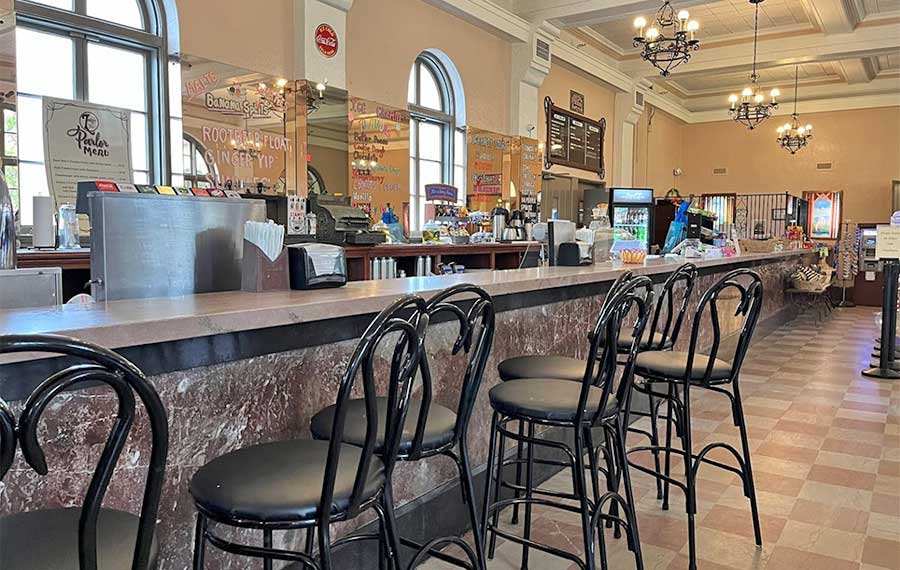
24) Rabbit Creek Market features over 100 vendors in an antique, artisan and vintage indoor mall.
Rabbit Creek Market in Tallahassee is a treasure trove for those who love unique finds and a lively shopping experience. Nestled in a convenient location, this bustling market brings together a diverse array of vendors offering everything from charming antiques and handcrafted artisan goods to rare vintage items with a story to tell. Whether you’re hunting for a one-of-a-kind keepsake or simply exploring the eclectic stalls, there’s something for everyone. The market is more than just a shopping destination – it’s a vibrant community hub where locals and visitors alike can connect, support small businesses, and soak in the welcoming atmosphere. With its rich mix of offerings, Rabbit Creek Market has become a must-visit spot for those seeking a little slice of Tallahassee’s creative and cultural charm.
25) Tallahassee lies along two migratory flyways, making it a prime location for birdwatching.
Tallahassee is a hotspot for birdwatching, thanks to its strategic location along the Atlantic and Mississippi migration flyways. These two major routes funnel an incredible variety of bird species through the area, especially during spring and fall seasons. Birdwatchers can spot warblers, waterfowl, raptors, and even rare species as they pass through or stop to rest in Tallahassee’s diverse habitats. The region boasts wetlands, forests, and coastal areas that provide vital resources for migrating birds. This blend of natural landscapes offers seasonal opportunities to witness the awe-inspiring movement of thousands of avian species, making Tallahassee a must-visit destination for birding enthusiasts.
Tallahassee is a city that truly has it all – rich history, cultural vibrancy, natural scenery, and one-of-a-kind attractions. From its deep-rooted Native American heritage to its role in shaping modern Florida, this capital city is a blend of old and new, offering something for everyone. Whether you’re exploring historic landmarks, enjoying outdoor adventures on its scenic trails, or cheering on the Seminoles at Doak Stadium, Tallahassee never ceases to inspire and amaze. These fun facts are just the beginning – why not plan a visit and experience the magic of this dynamic city for yourself? Be sure to check out our Tallahassee Vacation Guide for tips and resources to help you explore all the best attractions and plan an unforgettable trip. Florida’s capital city is ready to welcome you!

